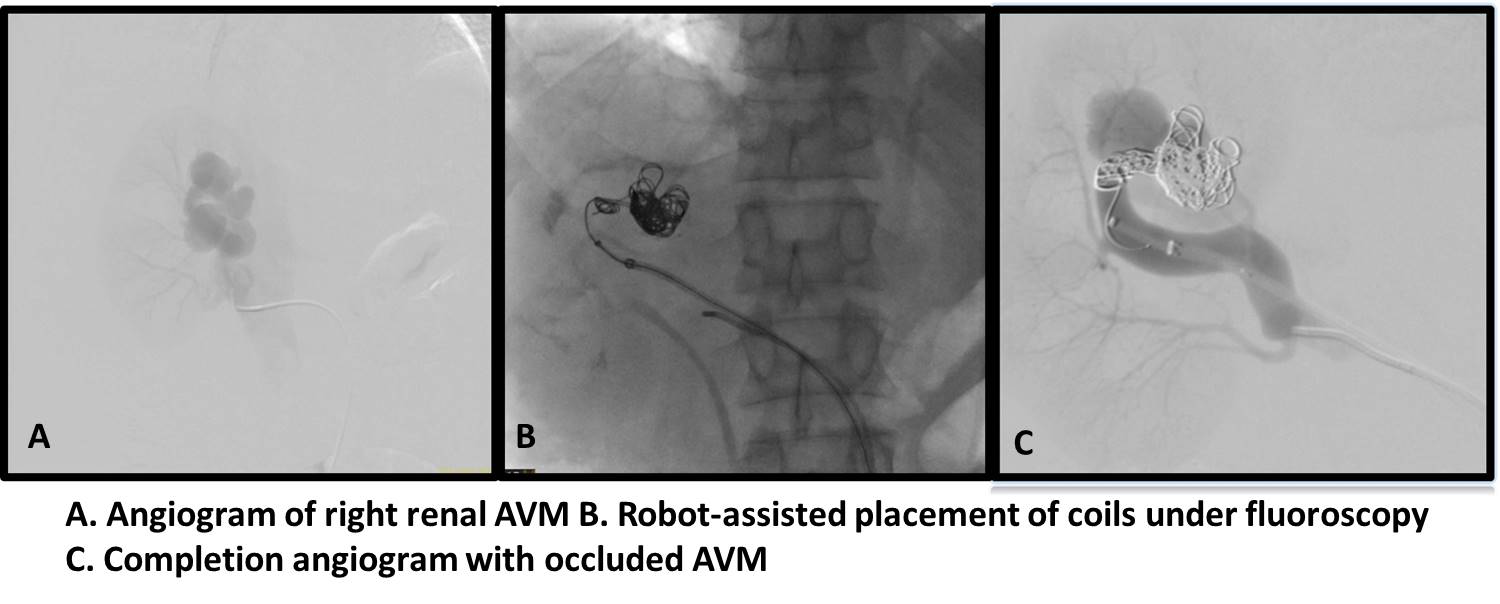Back to 2016 Annual Symposium ePosters
A Novel Approach of Robot-assisted Embolization of Renal Arteriovenous Malformations
Ali Irshad, MD, Ponraj Chinnadurai, Jean Bismuth, M.D., Alan Lumsden, M.D..
Houston Methodist Hospital, Houston, TX, USA.
OBJECTIVES: Renal arteriovenous malformations (AVMs) are rare, high flow and complex. Treatment for renal AVMs is typically endovascular, however, the procedure necessitates super selective catheterization, protecting the remaining kidney with controlled coil deployment to prevent non-target embolization. Three patients are reported who underwent precise, controlled coil deployment utilizing a robotic endovascular catheter with complete resolution of the AVM.
METHODS: One patient had flank pain, 2 were incidental findings on CT scanning, and all were located in the right kidney. Treatment was performed in the same way for all 3 patients. A C2 5 Fr diagnostic catheter was first placed via the right groin in the main right renal artery. This remained in place for contrast delivery. The robotic catheter was introduced via the left femoral artery and navigated into the main right renal artery. A cone beam CT scan was then performed and the AVM anatomy, feeding vessels and AV communications were mapped. The robot was navigated sequentially into each of the feeding third order renal vessels. Detachable coils were deployed into each of these vessels until complete hemostasis was obtained. Under fluoroscopic guidance, interlocking coils were deployed into the feeding vessels until reduction of flow in the feeding vessel was obtained.
RESULTS: Successful coil embolization was confirmed with repeat angiography manifested by dramatically reduced flow. Post-operatively, no symptoms of hematuria or flank pain were reported and all three patients had creatinine levels within normal limits. The robot provided stability in this very high flow environment, could be easily navigated from branch to branch, and permitted very distal access into the nidus.
CONCLUSIONS: Robotic-assisted coil embolization of AVM is a safe and effective method with an added dimension of control and steerability when placing embolization coils. This functionality enables improved control in cannulating feeding vessels of the AVM as well as in placement of the coils. 
Back to 2016 Annual Symposium ePosters
|







